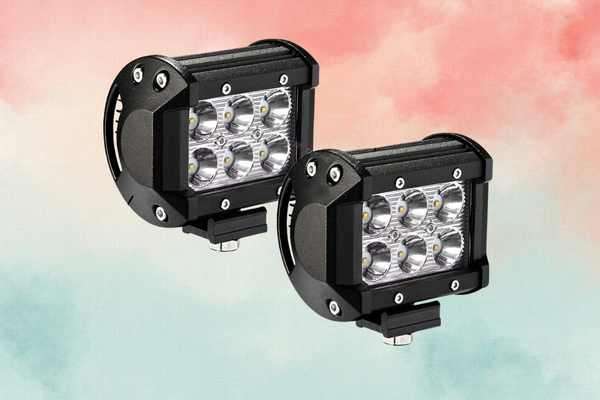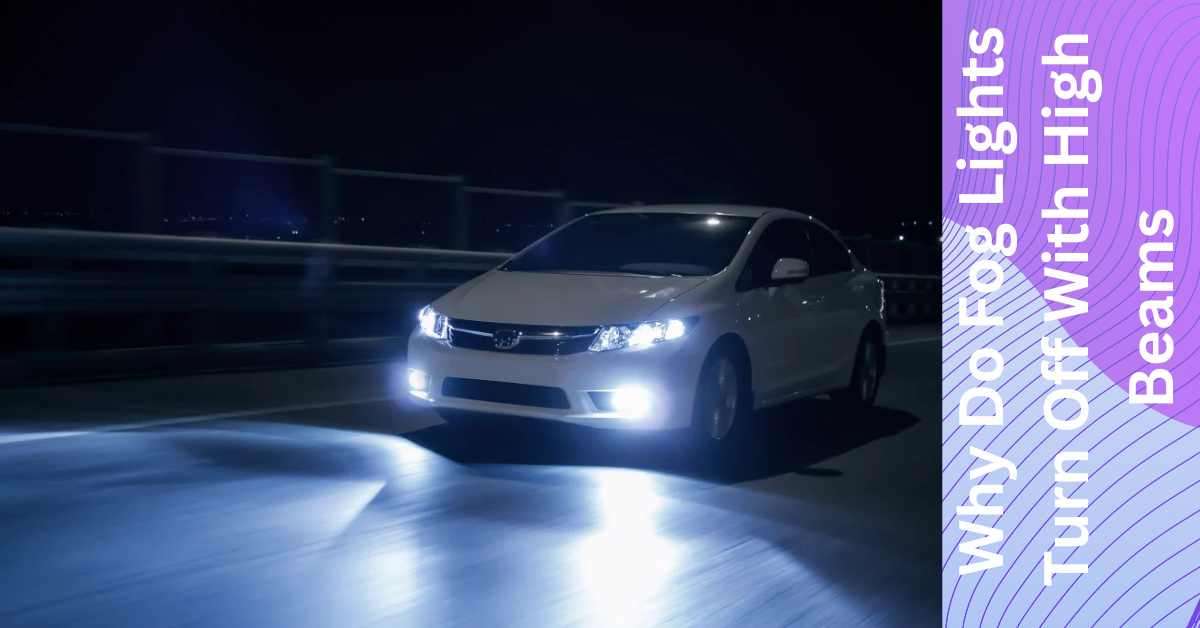Driving in foggy conditions can be an intimidating experience. Clear visibility is critical to safe driving, and fog lights can be an invaluable tool for improving visibility. But why do fog lights turn off when you switch on the high beams? In this blog post, we explore the reasons why fog lights are automatically switched off when you switch to high beams. We’ll also ensure that your fog lights are working correctly and safely.
What Are Fog Lights?
Fog lights are a type of auxiliary light that can provide additional illumination in foggy and inclement weather conditions. They are usually mounted low on the vehicle, in front and sometimes in the rear, and are typically designed to provide a wide, low-beam illumination to the ground in front of the vehicle.
Fog lights differ from regular headlights because they are designed to scatter their light more widely and at a lower angle instead of concentrating light in one spot. This type of light helps to provide better visibility in foggy conditions, reducing glare and allowing the driver to see further ahead. It also reduces the risk of blinding other drivers, which can be hazardous in overcast conditions.

Fog lights are often found in the same place as the vehicle’s regular headlights but can also be mounted in different areas. For example, they may be mounted on the bumper, or they may be mounted higher up on the vehicle, such as on the roof or the hood. They may also be mounted directly on the car, in which case they are referred to as “fender-mounted fog lights.”
Fog lights can be very beneficial in foggy conditions, providing better visibility and reducing the risk of blinding other drivers. However, it is essential to remember that fog lights are not a substitute for regular headlights. Fog lights should only be used in conjunction with the vehicle’s standard headlights, as they do not provide the same illumination level.
You might also read: Why Is Mercedes Navigation Not Working?
What Are High Beams
High beams are a vital part of driving safely, day or night. They are the brightest headlights a vehicle can have, and when used properly can significantly improve visibility for drivers and their surroundings. High beams are designed to light up the dark roads at night, allowing drivers to see further down the street and around curves.
High beams are typically found on cars and trucks. They are usually operated by a switch on the dashboard or steering wheel, allowing a driver to switch between high and low beams. The difference between high and low beams is the intensity of the light. Low beams provide a wider beam of light, while high beams project a more focused, intense light that can reach farther.
Drivers must use high beams responsibly. They should be used only when necessary, such as when driving in rural or unpaved areas or when visibility is poor due to weather or other obstacles. High beams should not be used in residential or urban areas or when coming up on other vehicles, as they can be blinding and dangerous if used close to other drivers.
High beams can be an essential safety feature for drivers when used correctly. They enable drivers to see more clearly and further down the road, helping them to drive more safely and avoid accidents. High beams are beneficial in dark areas or foggy conditions, allowing drivers to see obstacles and other vehicles further away.
Reasons Why Fog Lights Turn Off With High Beams
Fog lights are an essential safety feature for any vehicle, providing an extra layer of visibility for motorists in low-visibility environments. But why do fog lights turn off when the high beams are activated? Here are five reasons why fog lights turn off with high beams.
Safety Regulations
Safety regulations require that fog lights be automatically disabled when the high beams are activated. This prevents drivers from having too much light focused on one area, which can create a dangerous environment for other drivers. It is important to remember that fog lights are not a substitute for regular headlights, so they should never be used as such.
To Increase Visibility
Fog lights provide a narrow beam of light designed to be used in low-visibility conditions. When the high beams are activated, they can interfere with the fog lamps, making them harder to see. By turning the fog lights off, drivers can see their surroundings better.
To Reduce Glare
High beams can be extremely bright, creating a tremendous amount of glare. This can make it difficult for drivers to see their surroundings. Turning the fog lights off can help reduce glare, giving drivers a better view of their environment.
To Conserve Energy
Turning the fog lights off when the high beams are activated can conserve energy. Since fog lights are only needed in low-visibility conditions, turning them off when the high beams are on can help reduce the energy used.
Reduce the Light Reflecting of the Fog
Fog lights are designed to be used in low-visibility conditions, but the light they produce can be reflected off the fog, creating more glare. Turning the fog lights off when the high beams are activated reduces the light produced by the fog lights, making it easier to see through the fog.
Can You Have Fog Lights on With High Beams?
The law permits a maximum of two front-mounted fog lights in addition to the traditional headlights. However, these fog lights are only to be used with low-beam headlights. They are not to be used with high-beam headlights. The fog lights must also be white or amber.
These fog lights are designated to help you see in extreme fog conditions. It is essential to realize that they are not to be used in situations of rain or snow. This is because they are not bright enough to penetrate these conditions. The purpose of fog lights is to help you see in extremely foggy conditions.
Fog lights with high beams are not allowed in any state. This is because it is considered to be too dangerous. It can cause a great deal of glare and reflection from the high-beam headlights that can blind other drivers and make it difficult to see.
Understanding the laws in your state before installing and using fog lights is essential. You should also ensure that you follow the manufacturer’s instructions for installing and using fog lights. Failure to follow the instructions can result in a fine or, worse, a traffic accident.
Can You Run Fog Lights and Headlights Together?
Using fog lights and both dipped headlights and daytime running lights simultaneously is unsafe. This is because the two types of lights produce different kinds of beams, and together, they can create an uncomfortable glare that can impair your vision rather than help you to see better.
During the daytime, when visibility is not an issue, you can switch between your dipped headlights or day running lights and fog lights. This is because the fog lights produce a broad, low beam that spreads out in a wide arc in front of you, helping you to see more of the road ahead. However, this should only be done during the daytime when there is no risk of encountering fog, rain, or snow.
At night, when visibility is much more of a concern, replacing your dipped headlights with fog lights is not safe. This is because dipped headlights are designed to create a beam that is projected downwards and forward, helping you see the road better and spot any potential road hazards. This beam should not be replaced with a fog light, as this would create a glare that would be difficult to see.
Conclusion
Fog lights are essential to any vehicle, and their importance cannot be overstated. They provide improved visibility in low visibility conditions, helping to make roads and highways safer for everyone. However, it is essential to note that fog lights are designed to turn off when the vehicle’s high beams are activated. This is done to ensure that the driver is not blinded by the fog lights and reduces the risk of dazzling other drivers.


